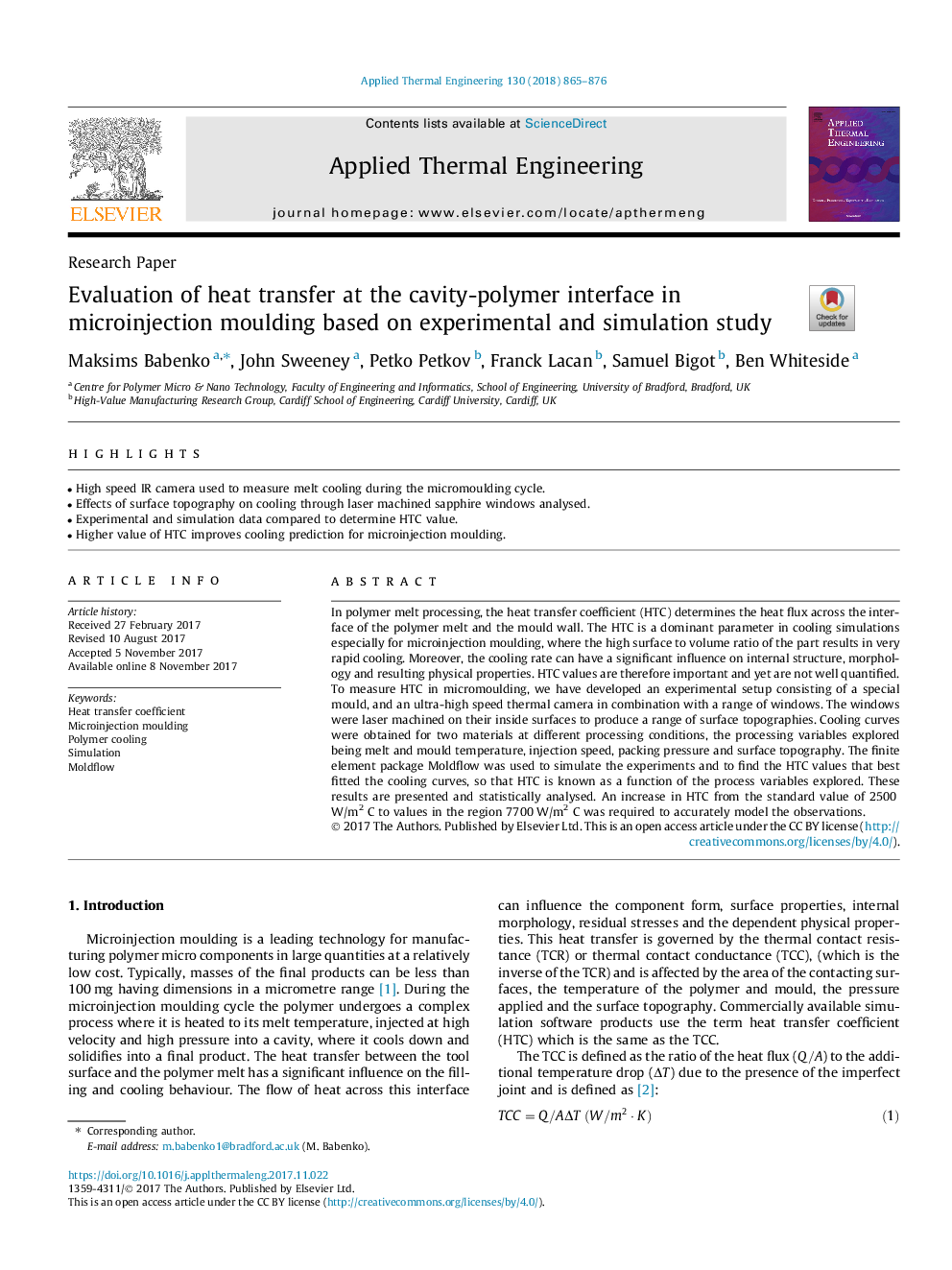| کد مقاله | کد نشریه | سال انتشار | مقاله انگلیسی | نسخه تمام متن |
|---|---|---|---|---|
| 7046462 | 1457099 | 2018 | 12 صفحه PDF | دانلود رایگان |
عنوان انگلیسی مقاله ISI
Evaluation of heat transfer at the cavity-polymer interface in microinjection moulding based on experimental and simulation study
ترجمه فارسی عنوان
بررسی انتقال حرارت در حفره-پلیمر در قالب گیری میکروکنترل بر اساس مطالعات تجربی و شبیه سازی
دانلود مقاله + سفارش ترجمه
دانلود مقاله ISI انگلیسی
رایگان برای ایرانیان
کلمات کلیدی
موضوعات مرتبط
مهندسی و علوم پایه
مهندسی شیمی
جریان سیال و فرایندهای انتقال
چکیده انگلیسی
In polymer melt processing, the heat transfer coefficient (HTC) determines the heat flux across the interface of the polymer melt and the mould wall. The HTC is a dominant parameter in cooling simulations especially for microinjection moulding, where the high surface to volume ratio of the part results in very rapid cooling. Moreover, the cooling rate can have a significant influence on internal structure, morphology and resulting physical properties. HTC values are therefore important and yet are not well quantified. To measure HTC in micromoulding, we have developed an experimental setup consisting of a special mould, and an ultra-high speed thermal camera in combination with a range of windows. The windows were laser machined on their inside surfaces to produce a range of surface topographies. Cooling curves were obtained for two materials at different processing conditions, the processing variables explored being melt and mould temperature, injection speed, packing pressure and surface topography. The finite element package Moldflow was used to simulate the experiments and to find the HTC values that best fitted the cooling curves, so that HTC is known as a function of the process variables explored. These results are presented and statistically analysed. An increase in HTC from the standard value of 2500â¯W/m2 C to values in the region 7700â¯W/m2 C was required to accurately model the observations.
ناشر
Database: Elsevier - ScienceDirect (ساینس دایرکت)
Journal: Applied Thermal Engineering - Volume 130, 5 February 2018, Pages 865-876
Journal: Applied Thermal Engineering - Volume 130, 5 February 2018, Pages 865-876
نویسندگان
Maksims Babenko, John Sweeney, Petko Petkov, Franck Lacan, Samuel Bigot, Ben Whiteside,
